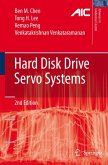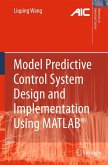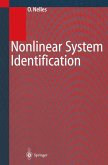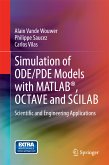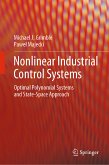Mohieddine Jelali, Andreas Kroll
Hydraulic Servo-systems (eBook, PDF)
Modelling, Identification and Control
160,95 €
160,95 €
inkl. MwSt.
Sofort per Download lieferbar

80 °P sammeln
160,95 €
Als Download kaufen

160,95 €
inkl. MwSt.
Sofort per Download lieferbar

80 °P sammeln
Jetzt verschenken
Alle Infos zum eBook verschenken
160,95 €
inkl. MwSt.
Sofort per Download lieferbar
Alle Infos zum eBook verschenken

80 °P sammeln
Mohieddine Jelali, Andreas Kroll
Hydraulic Servo-systems (eBook, PDF)
Modelling, Identification and Control
- Format: PDF
- Merkliste
- Auf die Merkliste
- Bewerten Bewerten
- Teilen
- Produkt teilen
- Produkterinnerung
- Produkterinnerung

Bitte loggen Sie sich zunächst in Ihr Kundenkonto ein oder registrieren Sie sich bei
bücher.de, um das eBook-Abo tolino select nutzen zu können.
Hier können Sie sich einloggen
Hier können Sie sich einloggen
Sie sind bereits eingeloggt. Klicken Sie auf 2. tolino select Abo, um fortzufahren.

Bitte loggen Sie sich zunächst in Ihr Kundenkonto ein oder registrieren Sie sich bei bücher.de, um das eBook-Abo tolino select nutzen zu können.
Large numbers of industrial processes and products use hydraulic servo-systems from steel rolling to the lowering of aircraft undercarriages and car braking systems. The widespread application of such systems means that the book should sell to engineers from many industrial backgrounds.
- Geräte: PC
- ohne Kopierschutz
- eBook Hilfe
- Größe: 31.5MB
Andere Kunden interessierten sich auch für
![Practical Grey-box Process Identification (eBook, PDF) Practical Grey-box Process Identification (eBook, PDF)]() Torsten P. BohlinPractical Grey-box Process Identification (eBook, PDF)112,95 €
Torsten P. BohlinPractical Grey-box Process Identification (eBook, PDF)112,95 €![Hard Disk Drive Servo Systems (eBook, PDF) Hard Disk Drive Servo Systems (eBook, PDF)]() Ben M. ChenHard Disk Drive Servo Systems (eBook, PDF)112,95 €
Ben M. ChenHard Disk Drive Servo Systems (eBook, PDF)112,95 €![Model Predictive Control System Design and Implementation Using MATLAB® (eBook, PDF) Model Predictive Control System Design and Implementation Using MATLAB® (eBook, PDF)]() Liuping WangModel Predictive Control System Design and Implementation Using MATLAB® (eBook, PDF)136,95 €
Liuping WangModel Predictive Control System Design and Implementation Using MATLAB® (eBook, PDF)136,95 €![Mathematical Methods for Robust and Nonlinear Control (eBook, PDF) Mathematical Methods for Robust and Nonlinear Control (eBook, PDF)]() Mathematical Methods for Robust and Nonlinear Control (eBook, PDF)72,95 €
Mathematical Methods for Robust and Nonlinear Control (eBook, PDF)72,95 €![Nonlinear System Identification (eBook, PDF) Nonlinear System Identification (eBook, PDF)]() Oliver NellesNonlinear System Identification (eBook, PDF)80,95 €
Oliver NellesNonlinear System Identification (eBook, PDF)80,95 €![Simulation of ODE/PDE Models with MATLAB®, OCTAVE and SCILAB (eBook, PDF) Simulation of ODE/PDE Models with MATLAB®, OCTAVE and SCILAB (eBook, PDF)]() Alain Vande WouwerSimulation of ODE/PDE Models with MATLAB®, OCTAVE and SCILAB (eBook, PDF)96,95 €
Alain Vande WouwerSimulation of ODE/PDE Models with MATLAB®, OCTAVE and SCILAB (eBook, PDF)96,95 €![Nonlinear Industrial Control Systems (eBook, PDF) Nonlinear Industrial Control Systems (eBook, PDF)]() Michael J. GrimbleNonlinear Industrial Control Systems (eBook, PDF)175,95 €
Michael J. GrimbleNonlinear Industrial Control Systems (eBook, PDF)175,95 €-
-
-
Large numbers of industrial processes and products use hydraulic servo-systems from steel rolling to the lowering of aircraft undercarriages and car braking systems. The widespread application of such systems means that the book should sell to engineers from many industrial backgrounds.
Dieser Download kann aus rechtlichen Gründen nur mit Rechnungsadresse in A, B, BG, CY, CZ, D, DK, EW, E, FIN, F, GR, HR, H, IRL, I, LT, L, LR, M, NL, PL, P, R, S, SLO, SK ausgeliefert werden.
Produktdetails
- Produktdetails
- Verlag: Springer London
- Seitenzahl: 355
- Erscheinungstermin: 6. Dezember 2012
- Englisch
- ISBN-13: 9781447100997
- Artikelnr.: 44000768
- Verlag: Springer London
- Seitenzahl: 355
- Erscheinungstermin: 6. Dezember 2012
- Englisch
- ISBN-13: 9781447100997
- Artikelnr.: 44000768
- Herstellerkennzeichnung Die Herstellerinformationen sind derzeit nicht verfügbar.
Mohieddine Jelali received the Dipl.-Ing. and Dr.-Ing. degrees from the University of Duisberg, Germany in 1993 and 1997 respectively, both in mechanical engineering. From 1993 to 1996, he was research assistant with the Department of Measurement and Control.
From 1996 to 1999, he worked as a research-and-development engineer with Mannesmann Demag Metallurgy in Ratingen, BU Cold Rolling and Processing. In September 1999, he joined the Betriebsforchungsinstitut - VDEh-Institut für angewandte Forschung GmbH in Düsseldorf as a project manager and co-ordinator of multinational research projects in the steel industry. His main fields of interest include: modelling, dynamic simulation, development of advanced controls and control prototyping for rolling mills and supervisory control of steel processes.
Since October he has been a lecturer in control systems at the University of Duisberg. He has written/co-written 14 research publications.
Andreas Kroll obtained his Dr.-Ing. in mechanical engineering at the University of Duisberg in 1996. From 1993 to 1996, he was also a research assistant with the Department of Measurement and Control.
In 1996 Doctor Kroll joined the ABB Research Centre in Heidelberg as a research-and-development engineer. Since 1998, he has been International R&D manager and since 2000, the group leader for Applied Control and Optimisation. His current research interests include: methods of computational intelligence, advanced process control and applications, dynamic simulation and optimisation of processes, international project management and personal and technological strategies of the line unit.
He has written or co-written 16 publications.
From 1996 to 1999, he worked as a research-and-development engineer with Mannesmann Demag Metallurgy in Ratingen, BU Cold Rolling and Processing. In September 1999, he joined the Betriebsforchungsinstitut - VDEh-Institut für angewandte Forschung GmbH in Düsseldorf as a project manager and co-ordinator of multinational research projects in the steel industry. His main fields of interest include: modelling, dynamic simulation, development of advanced controls and control prototyping for rolling mills and supervisory control of steel processes.
Since October he has been a lecturer in control systems at the University of Duisberg. He has written/co-written 14 research publications.
Andreas Kroll obtained his Dr.-Ing. in mechanical engineering at the University of Duisberg in 1996. From 1993 to 1996, he was also a research assistant with the Department of Measurement and Control.
In 1996 Doctor Kroll joined the ABB Research Centre in Heidelberg as a research-and-development engineer. Since 1998, he has been International R&D manager and since 2000, the group leader for Applied Control and Optimisation. His current research interests include: methods of computational intelligence, advanced process control and applications, dynamic simulation and optimisation of processes, international project management and personal and technological strategies of the line unit.
He has written or co-written 16 publications.
1 Introduction.- 1.1 Historical View and Motivation for Hydraulic Systems.- 1.2 Aims and Focus of the Book.- 1.3 Outline of the Chapters.- 1.4 Background of the Work and Bibliographical Notes.- 2 General Description of Hydraulic Servo-systems.- 2.1 Basic Structure of Hydraulic Servo-systems.- 2.2 Description of the Components.- 2.3 Classification of Hydraulic Servo-systems.- 2.4 Measurement and Control Devices.- 2.5 Application Examples.- 3 Physical Fundamentals of Hydraulics.- 3.1 Physical Properties of Fluids.- 3.2 General Equations of Fluid Motion.- 3.3 Flow Through Passages.- 3.4 Spool Port Forces.- 3.5 Electro-hydraulic Analogy.- 4 Physically Based Modelling.- 4.1 Introduction.- 4.2 Elementary Models.- 4.3 Typical Non-linear State-space Models.- 4.4 Structured and Simplified Models of Valve-controlled Systems.- 4.5 Determination of Specific Model Parameters.- 4.6 Implementation and Software Tools.- 4.7 Section Summary.- 5 Experimental Modelling (Identification).- 5.1 Introduction.- 5.2 Pre-identification Process.- 5.3 Overview of Model Structures.- 5.4 Description of Selected Non-linear Model Structures.- 5.5 Parameter Estimation Methods.- 5.6 Optimisation Algorithms.- 5.7 Grey-box Identification ofNon-linear Hydraulic Servo-system Models.- 5.8 Fuzzy Identification.- 5.9 Identification with Artificial Neural Networks.- 6 Hydraulic Control Systems Design.- 6.1 Introduction.- 6.2 Classical Feedback Control Design.- 6.3 Estimator-based State Feedback Control.- 6.4 Extensions to Linear Feedback Control.- 6.5 Feedback Linearising Control.- 6.6 Approaches Similar to Feedback Linearisation.- 6.7 Fuzzy Control.- 6.8 Neural-network-based Control.- 6.9 Vibration Damping Control.- 6.10 State Estimation.- 6.11 Implementation and Software Tools.- 6.12 Rapid Prototyping Tools for Control.- 6.13 Section Summary.- 7 Case Studies and Experimental Results.- 7.1 Identification and Control of a Synchronising Cylinder.- 7.2 Modelling and Control of a Small Differential Cylinder.- 7.3 Control of a Big Differential Cylinder.- 7.4 Vibration Damping Control for a Flexible Robot.- 7.5 Vibration Damping Control for a Concrete Pump.- Appendix A Fluid Power Symbols.- Appendix B Data and Catalogue Sheets.- Appendix C Non-linear Control Background.- References.
1 Introduction.- 1.1 Historical View and Motivation for Hydraulic Systems.- 1.2 Aims and Focus of the Book.- 1.3 Outline of the Chapters.- 1.4 Background of the Work and Bibliographical Notes.- 2 General Description of Hydraulic Servo-systems.- 2.1 Basic Structure of Hydraulic Servo-systems.- 2.2 Description of the Components.- 2.3 Classification of Hydraulic Servo-systems.- 2.4 Measurement and Control Devices.- 2.5 Application Examples.- 3 Physical Fundamentals of Hydraulics.- 3.1 Physical Properties of Fluids.- 3.2 General Equations of Fluid Motion.- 3.3 Flow Through Passages.- 3.4 Spool Port Forces.- 3.5 Electro-hydraulic Analogy.- 4 Physically Based Modelling.- 4.1 Introduction.- 4.2 Elementary Models.- 4.3 Typical Non-linear State-space Models.- 4.4 Structured and Simplified Models of Valve-controlled Systems.- 4.5 Determination of Specific Model Parameters.- 4.6 Implementation and Software Tools.- 4.7 Section Summary.- 5 Experimental Modelling (Identification).- 5.1 Introduction.- 5.2 Pre-identification Process.- 5.3 Overview of Model Structures.- 5.4 Description of Selected Non-linear Model Structures.- 5.5 Parameter Estimation Methods.- 5.6 Optimisation Algorithms.- 5.7 Grey-box Identification ofNon-linear Hydraulic Servo-system Models.- 5.8 Fuzzy Identification.- 5.9 Identification with Artificial Neural Networks.- 6 Hydraulic Control Systems Design.- 6.1 Introduction.- 6.2 Classical Feedback Control Design.- 6.3 Estimator-based State Feedback Control.- 6.4 Extensions to Linear Feedback Control.- 6.5 Feedback Linearising Control.- 6.6 Approaches Similar to Feedback Linearisation.- 6.7 Fuzzy Control.- 6.8 Neural-network-based Control.- 6.9 Vibration Damping Control.- 6.10 State Estimation.- 6.11 Implementation and Software Tools.- 6.12 Rapid Prototyping Tools for Control.- 6.13 Section Summary.- 7 Case Studies and Experimental Results.- 7.1 Identification and Control of a Synchronising Cylinder.- 7.2 Modelling and Control of a Small Differential Cylinder.- 7.3 Control of a Big Differential Cylinder.- 7.4 Vibration Damping Control for a Flexible Robot.- 7.5 Vibration Damping Control for a Concrete Pump.- Appendix A Fluid Power Symbols.- Appendix B Data and Catalogue Sheets.- Appendix C Non-linear Control Background.- References.
From the reviews: Altogether the book gives a comprehensive survey of physical modelling, conventional and modern control stategies for hydraulic drives and can be recommended to engineers and scientists who are working in this field. Simulation News Europe 38/39 (2003) 61 - 62 (Reviewer: Peter Beater)


